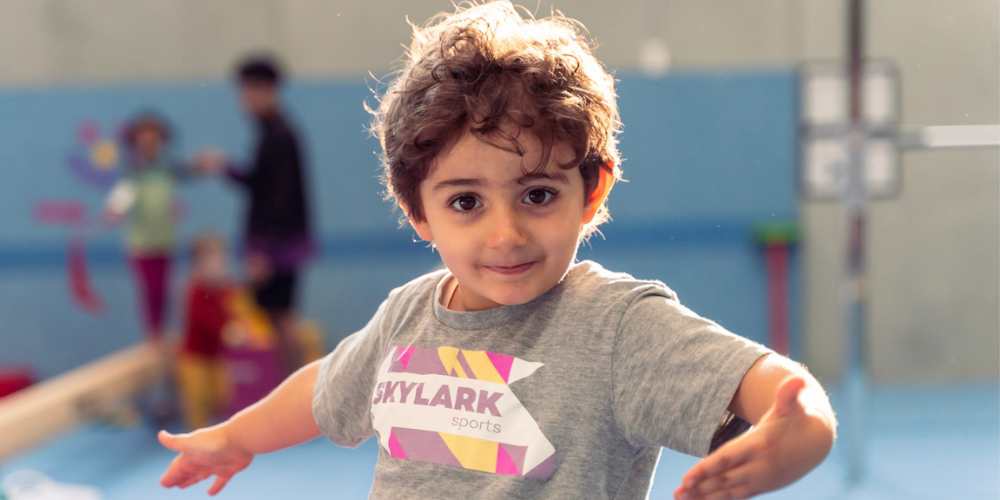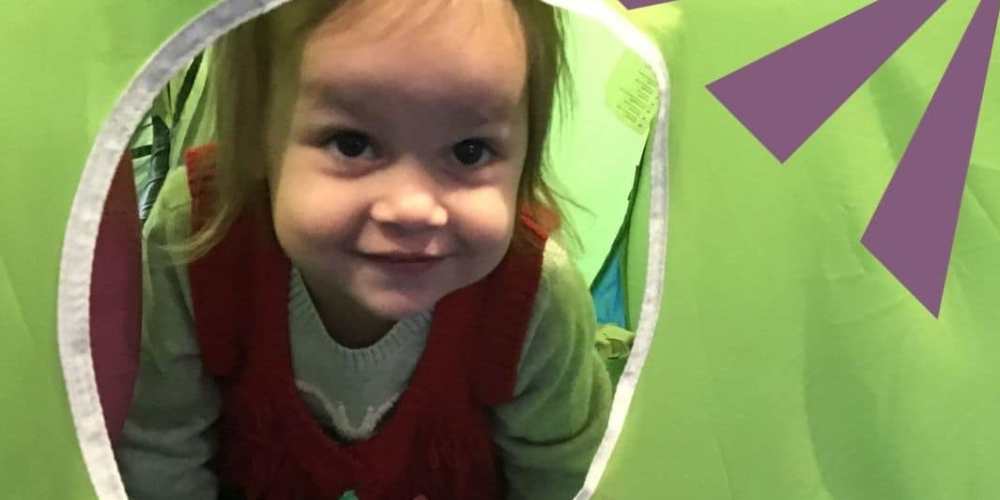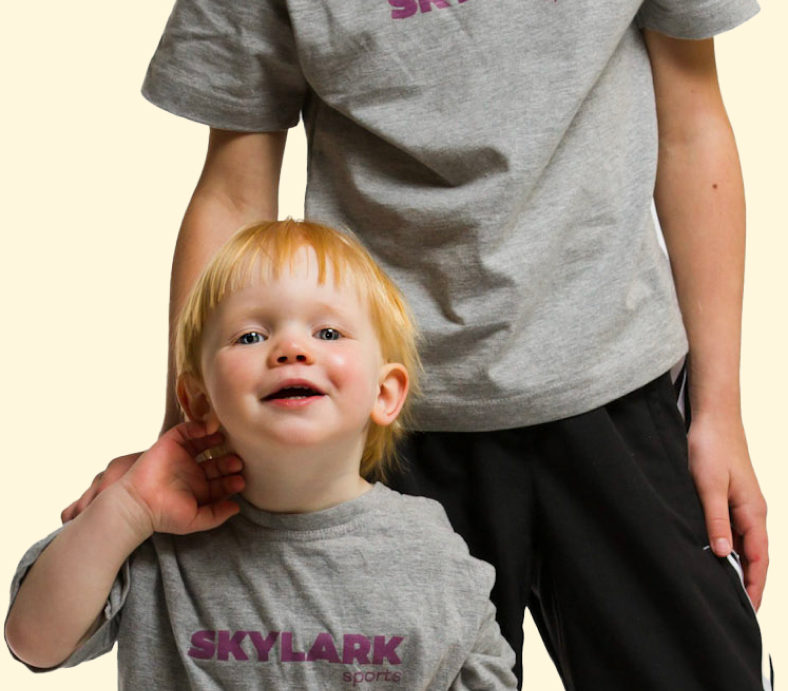Let's get into a topic at the core of every laughing, inquiring, and shaky step of your child's journey - movement and play. We've all heard that these two factors are the secret ingredients in a child's growth formula. But here's the twist: there are several approaches to them, and that's what we're here to discuss.
Think about this: on the one hand, we have a world of little gym classes with organized routines and skill-building from the start. On the other hand, traditional playtime is a carefree, no-rules zone where creativity and discovery reign supreme.
Now, I understand that, as parents, you want to make the greatest decisions for your children. It's as if you're laying the groundwork for their future immediately. But how can you determine which course to pursue when there are so many options? Is the structured world of baby gymnastics the way to go, or is giving your child the freedom to play traditionally equally important?
Let's find out!

What is Baby Gymnastics
Baby gymnastics, often known as infant gymnastics or baby gym, is a fun and participatory physical training program for infants and toddlers. It's like a miniature version of Olympic gymnastics but customized to the developmental requirements of extremely young children.
Baby gymnastics aims to help newborns develop motor skills, coordination, and general physical development in a fun and safe setting. It's not about turning them into little Simone Biles or Nadia Comăneci overnight but about allowing them to explore movement, grow strength, and gain confidence.
Gentle stretches, tummy time exercises, rolling, crawling, and simple motions that encourage reaching, gripping, and holding things are likely to be seen in a baby gymnastics class. Soft mats, colorful accessories, and cushioned equipment may also be present to stimulate newborns' senses and curiosity.
It's not about rigorous training or pushing babies over their limits. Rather, it is about establishing a pleasant and joyful experience that supports physical development while bonding with caregivers and socializing with other infants and parents in a social context.
Benefits of Baby Gymnastics
First, baby gymnastics isn't just about flips and tumbles (we'll save those for when they're older!). It's about giving your little one a head start in the physical development game.
Motor Skills Development
Baby gymnastics promotes a variety of motions, such as rolling, crawling, and reaching. These motions are excellent for your baby's physical development since they aid in developing strength, balance, and coordination. They're effectively setting the foundations for more sophisticated motions like walking and even running later on as they practice these core abilities.
Sensory Stimulation
We use colorful mats, soft toys, and different textures in baby gymnastics to stimulate your baby's senses. These sensory encounters are critical for their cognitive development. When newborns touch, feel, and engage with diverse textures and objects, they stimulate their brain growth and get a greater understanding of their surroundings.
Social Interaction
Baby gymnastics courses are a great way to expose your child to social interactions in a safe and supportive environment. They get to observe and interact with other infants, which helps them develop social skills such as watching and mimicking. Furthermore, as parents, you are part of a community where you can share stories and suggestions and encourage one another on the wonderful adventure of parenthood.
Building Self-confidence
Imagine your baby's delight when they roll over or reach for a toy! These modest victories are huge confidence boosts. Your baby will learn they can attain things by performing these moves in baby gymnastics. This early self-assurance provides a solid basis for their self-esteem as they mature.
Bonding Time
Baby gymnastics is more than just physical development; it's also about developing your relationship with your child. You are not only giving kids vital experiences, but you are also making precious memories together via shared activities. The laughter, cuddling, and discovery you share throughout these lessons build a unique and profound bond.
Safety Emphasis
When it comes to baby gymnastics, safety comes first. Gymnastics programs are carefully designed to ensure that the activities and equipment are age and developmental stage suitable for your baby. You can relax knowing your baby may explore, move, and engage in an environment designed for their needs and safety.
Individual Development
Like every adult, every child is unique and grows at their speed. We recognize each baby's unique growth in baby gymnastics. Some people may respond immediately to specific moves, while others may require more time - and that's all OK! We are committed to assisting each baby on their journey and assisting them to thrive in their unique way.
What Does Traditional Playtime Actually Mean?
Traditional playtime refers to the sorts of play activities children have enjoyed for decades before the introduction of contemporary technology and digital entertainment. It entails participating in basic, imaginative, hands-on activities encouraging creativity, social contact, and physical activity.
Building with blocks, playing board games, creating art with crayons or paints, pretending with dolls or action figures, exploring outdoor places, riding bikes or scooters, playing tag or hide-and-seek, and participating in make-believe situations are all examples of traditional playtime. These activities frequently rely on the use of one's imagination as well as direct interaction with the actual surroundings and other kids.
Advantages of Traditional Playtime
Increased Creativity
Traditional playtime encourages youngsters to use their imaginations to construct their unique worlds. Building a fort, playing with dolls, or sketching helps children develop their imagination and unique situations, boosting their artistic and inventive thinking.
Social Skills
Traditional playtime emphasizes socializing through games such as tag or cooperative tasks such as building together. Children learn to share, take turns, communicate, negotiate, and work as part of a team as a result of these interactions, laying the groundwork for effective social skills.
Motor Skills Improvement
Many traditional play activities include physical movement, which helps kids enhance both fine and gross motor abilities. Threading beads into a string, climbing on playground equipment, or painting with crayons are all activities that help youngsters improve their coordination and agility.
Cognitive Development
Traditional playtime activities frequently bring difficulties that need problem-solving and critical thinking. Learning how to build a tower with blocks or solve a problem allows youngsters to think rationally, strategize, and make decisions independently, which promotes cognitive growth.
Emotional Wellness
Traditional play allows youngsters to express and control their emotions positively. It helps kids process feelings and experiences healthily and imaginatively, whether playing out situations with toys or engaging in imaginative play.
Screen Time Balance
With the dominance of screens in modern society, traditional playtime provides a welcome diversion from electronic gadgets. It encourages children to interact with their surroundings, improving their sensory experiences and guaranteeing a more balanced relationship with technology.
Long-lasting Memories
Traditional play activities frequently build enduring memories for youngsters that they carry into adulthood. Building sandcastles on the beach or playing board games with family occupy a particular place in a person's heart and contribute to nostalgia and connection with the past.

Baby Gymnastics vs. Traditional Playtime - Key Differences
Let's explore the key differences between baby gymnastics and traditional playtime:
Baby Gymnastics
- Structured Activity: Baby gymnastics consists of structured lessons teachers teach, including particular exercises to encourage motor skill development in newborns and toddlers.
- Focused Development: Baby gymnastics' major purpose is to improve physical qualities such as balance, coordination, and strength in a controlled and directed setting.
- Age-Related Equipment: Baby gymnastics programs frequently use specially constructed mats, soft equipment, and props to meet the requirements and safety of very young children.
- Facilitated Learning: Instructors gently assist babies through stretches, exercises, and activities, creating a safe setting for early physical development.
- Parental Participation: Baby gymnastics frequently includes parents or caregivers actively engaging alongside their baby, promoting connection and engagement.
- Social Involvement: While there is some connection with other babies, the major emphasis is on guided exercises and activities rather than free-form play with peers.
- Milestones in Development: Baby gymnastics lessons are intended to assist newborns in meeting developmental goals in an organized and systematic manner.
Traditional Playtime:
- Unstructured Exploration: Traditional playtime consists of unstructured, open-ended play in which children participate in various activities without following tight standards or schedules.
- Holistic Development: Traditional play encourages many aspects of development, including creativity, imagination, social skills, physical activity, and emotional expression.
- Simple Props and Toys: Traditional play uses common toys, objects, and settings, allowing children to use their imaginations to create games and scenarios.
- Self-Directed Play: Children direct their playtime, choosing which activities to participate in and how to explore their environment.
- Peer Interaction: Traditional play frequently involves engagement with other children, which promotes social interaction, collaboration, and shared experiences.
- Diverse Activities: Traditional play includes various activities, such as block-building, role-playing, painting, and exploring outdoors.
- Exploration and Fun: The emphasis is on fun, discovery, and learning via play, with children encouraged to pursue their interests and curiosity.
Parents, Keep This in Mind
Parents, there are a few important points to keep in mind when considering baby gymnastics and traditional playtime for your little ones:
Balance is Key
Balancing scheduled activities such as baby gymnastics and unstructured conventional playing is essential. Both techniques have distinct advantages, so select a combination that meets your child's developmental requirements and your family's tastes.
Child's Interests and Needs
Take note of your child's hobbies and preferences. Some children flourish in regulated situations, while others shine when they are allowed to be creative. Customize your approach to what interests and thrills them.
Individual Pace
Keep in mind that each child develops at their rate. While baby gymnastics has defined aims, traditional playtime respects your child's natural development, encouraging self-discovery and creativity.
Parental Involvement
Baby gymnastics and traditional playtime both provide chances for companionship. Participate in their play and learning through mild motions or accompanying them in imaginary adventures.
Joy and Well-being
Above everything, prioritize your child's happiness and well-being. Activities should be fun and age-appropriate to encourage a healthy relationship with physical exercise and play.
Consultation and Communication
Consult your physician before enrolling your kid in any organized activity, such as baby gymnastics. Communicate with other parents for ideas and experiences to help you make decisions.
Adaptability
Be willing to change your approach as your child matures. What worked at one point may no longer work when their interests and developmental demands change.
Play with Purpose
Make sure play has a purpose, whether in class or during unstructured play. It is about being active and offering possibilities for growth, engagement, and skill development.
Spending Quality Time
Baby gymnastics and conventional playtime can provide great bonding opportunities. Cherish your time connecting with your child, building a deep and enduring bond.
Enjoy the Journey
Remember that your child's early years are a voyage of discovery and progress. Enjoy seeing them explore, learn, and develop through guided activities and unstructured play.
Frequently Asked Questions
How can I know which approach is best for my child?
Consider your child's developmental requirements, interests, and family values. You might also talk to your physician and get advice from other parents who have used both baby gymnastics and typical playtime.
Is one approach better than the other?
Neither strategy is fundamentally superior; each has unique benefits. Traditional playtime fosters creativity, social skills, and overall well-being, whereas baby gymnastics can give targeted physical skill development. A mix of the two can be a well-rounded strategy.
Is there an age limit for baby gymnastics?
Baby gymnastics lessons are typically geared toward infants and toddlers. They can begin as early as a few months old and continue until the child reaches preschool age. The age range varies according to the program and its focus.
Can traditional playtime also help physical development?
Traditional playtime, including running, climbing, and exploring, can contribute to physical development. While it may not be as specific as infant gymnastics, it promotes gross motor skill development.
Conclusion
Baby gymnastics combined with traditional playtime gives a wide range of options in terms of parental decisions. A mixture of both approaches that promote your child's development in many ways is the greatest method to determine what is best for them.
Baby gymnastics is similar to performing exercises to strengthen your baby's body. Playing traditional games and toys involves utilizing your imagination to have fun.
Finding a particular balance between these two is like choosing between them. It resembles blending structured learning with unstructured, imaginative play. This combination fosters your child's holistic growth and education.
Remember that the goal is to discover what your child likes and what fosters their growth. Growing up is thrilling and full of memories, whether trying out new techniques in baby gymnastics or making up stories in traditional play.
And if you are looking for the best guide to kickstart your precious one's gymnastic journey, do not hesitate to grab your phone and talk to your trusted gymnastic coach. We will be more than willing to answer every question.

